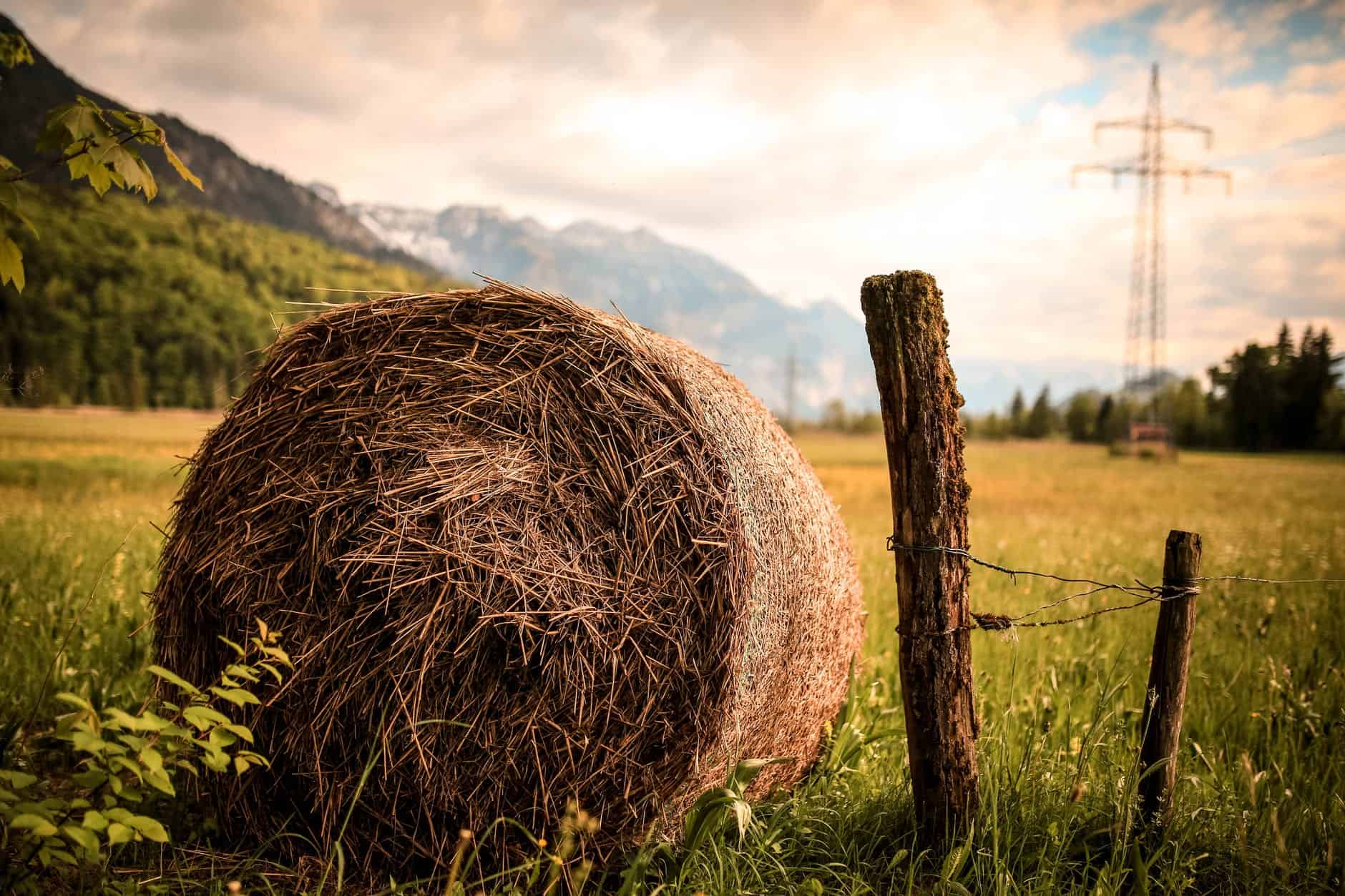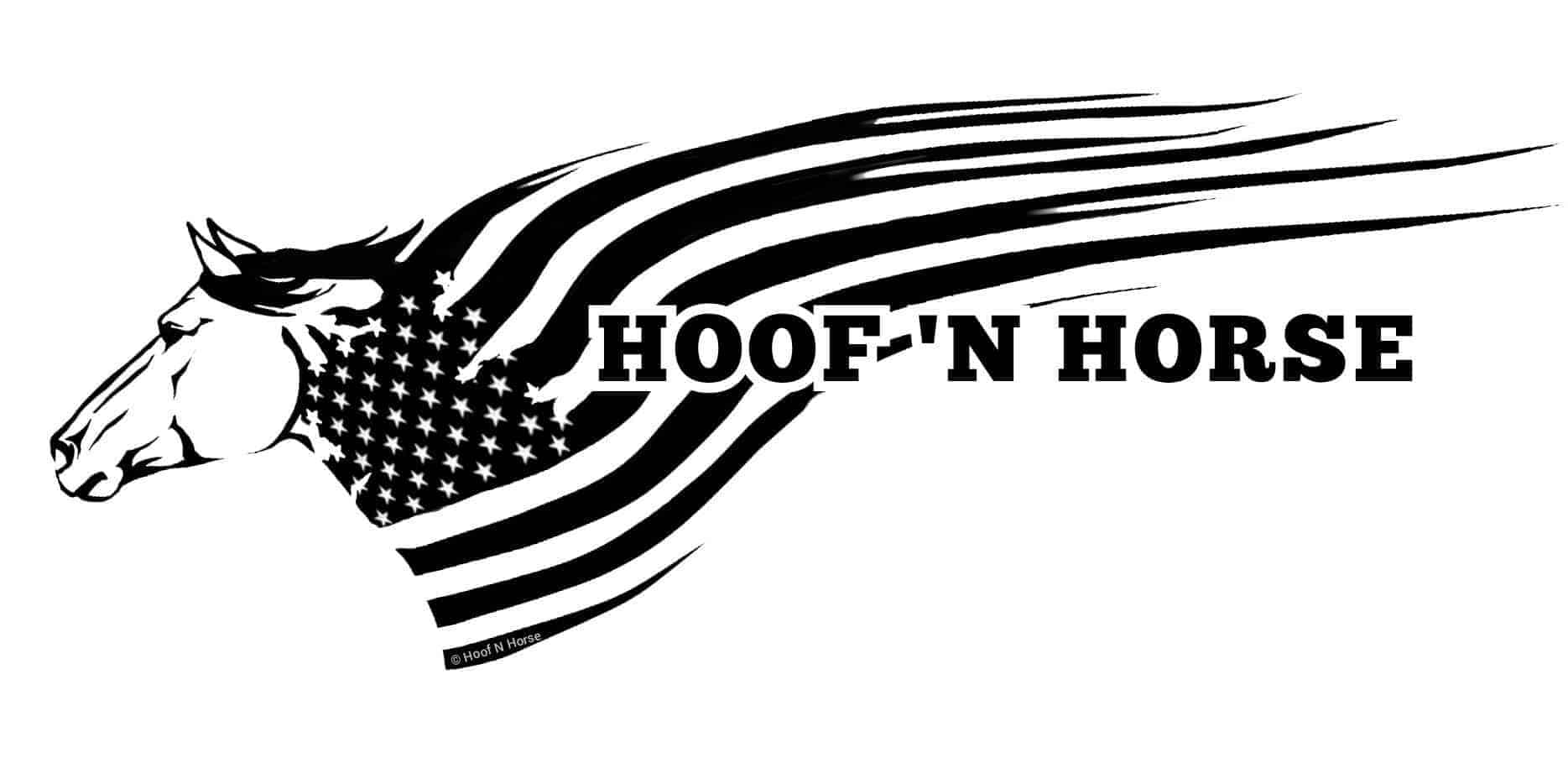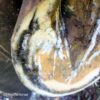Many times horse owners have expressed concern to me about their horse’s hay quality and nutritive value. They wonder how to buy quality horse hay, what to look for, and what to ask their hay provider.
Hay quality is an important issue because, after all, a horse’s diet consists entirely of grass, either green or dried. But just because the farmer says it’s quality horse hay, doesn’t necessarily mean it’s fit for horse consumption. For instance, hay intended for cows can potentially lead to disease or poisoning in horses. This is why it’s important to know before buying if hay is up to equine standards.

Square Bales are often The Safest Option
When a large supply of hay is required for multiple horses, round bales may seem like an economical option. However, there are some potential drawbacks that include loss of nutrients, mold, respiratory illness, and waste. For these reasons, square bales are often the safest option because they are easier to store properly, harbor less dust and pathogens, and allow for controlled feeding. When purchasing any type of bale, round or square, it’s important to determine if it’s equine or cattle hay. If the farmer specializes in selling horse hay, this would ensure that they have the right equipment, higher processing standards, and hay with higher nutritional value.
Visual Hay Quality Inspection
When hay is processed correctly, bales will look well-shaped & firm, contain no plastic or other foreign matter, and not be excessively moist or dry. Visual assessment of hay quality becomes significantly more important for horses compared to cows regarding mold or weeds. Avoid hay that smells of mildew, mustiness, or rotten odors, as this indicates the growth of mold or bacteria, which can lead to waste or disease in horses. Evaluating leafiness, or leaf-to-stem ratio reveals whether the hay has more leaves (higher nutrients) or stems (lower nutrients). Ideally, hay containing large intact leaves and small fine stems is best for equine consumption. Any hay filled with thick stems and weeds such as foxtails, dallisgrass, johnsongrass, and thistles should be avoided.
Hay & Soil Nutrition Testing
Chemical analysis determines the nutritive value and digestibility of hay. A soil test gives the farmer information on how to properly fertilize their fields and adjust pH levels, which gives plants the required nutrients and an ideal growing condition. Also, some farmers offer hay testing that gives a nutrient analysis to determine fiber, moisture, crude protein, and minerals to determine hay quality.
Proper Hay Storage
Moisture is hay’s worst enemy, particularly in storage. An article by the University of Minnesota says that bales stored on wood pallets, course rock, or old tires will prevent moisture absorption from the soil and reduce mold, which is exactly what responsible farmers will do to properly store hay. To maintain quality and nutritive value, hay should have limited exposure to the sun and rain, never be stored under trees, and be properly stacked to increase airflow. The best storage method that will prevent spoilage and waste is keeping hay in a well-ventilated barn or under a roof in an area with good drainage.
Grass Hay
Easy keepers or horses with insulin dysregulation do best on grass hay that is high in fiber and lower in protein and energy. Grass species commonly selected include Tall Fescue, Orchard, Bermuda, and Timothy. Grass hay benefits horses that require an easy-to-digest, nutrient-light, and fibrous diet.
Legume Hay
Hard keepers or performance horses may require the nutrient-dense, high-energy diet that legumes provide. The list of common legumes used in horse hay includes alfalfa, white or red clover, and birdsfoot trefoil. Legume hay should have an especially high leaf-to-stem ratio and is often mixed with grass hay.
Hay Selection For Metabolic Issues
It’s important to be selective when choosing hay for horses with starch or sugar sensitivities. High protein, high-quality hay might trigger health issues in horses diagnosed with a metabolic condition, such as EMS, or those prone to laminitis. According to Kentucky Equine Research, hay given to these horses should be low in nonstructural carbohydrates (NSC), which means lower levels in starch, water-soluble sugar, and fructan.
Hay Moisture Content
Overly moist hay will mold and decompose, allowing bacteria to grow which can cause botulism or other serious diseases in horses. Wet hay will be heavier, and feel warm to the touch indicating that it was not allowed to dry properly during the curing process. Moist hay can generate heat through cellular respiration combined with mold and bacteria activity; if the hay overheats to 175 degrees F, it can ignite through spontaneous combustion. Hay producers have several methods to determine moisture content, the most accurate and efficient being hand-held electronic testers.
Shelf Life For Horse Hay
The longer hay is stored, the more nutrient levels gradually decrease. In the article Nutrition Loss In Stored Hay, equine nutritionist Clair Thunes says, “up to a reported 80% of beta-carotene in forages is lost during curing, with an additional loss of about 7% per month of storage…Timothy hay loses as much as 60% of its vitamin E when cured in swaths for four days. Other research has shown that alfalfa stored at 30o Celsius (86 o Fahrenheit) for three months incurred vitamin E losses of 54-73%.” During the course of the year, these results may vary depending on storage methods, but it’s a fact that hay will lose some nutritional value over time. In general, it’s recommended that hay is used within two years after the processing date.

Take Away
Horse owners and hay providers benefit from long-lasting working relationships where open information and testing for nutritive value is offered. Most hay providers will be happy to work with you if they want repeat business, and will have data to back up their product. Even so, it’s always a good idea to know how to inspect hay with them before purchase and inquire about any concerns. In the end, it’s all about keeping horses happy and healthy!


